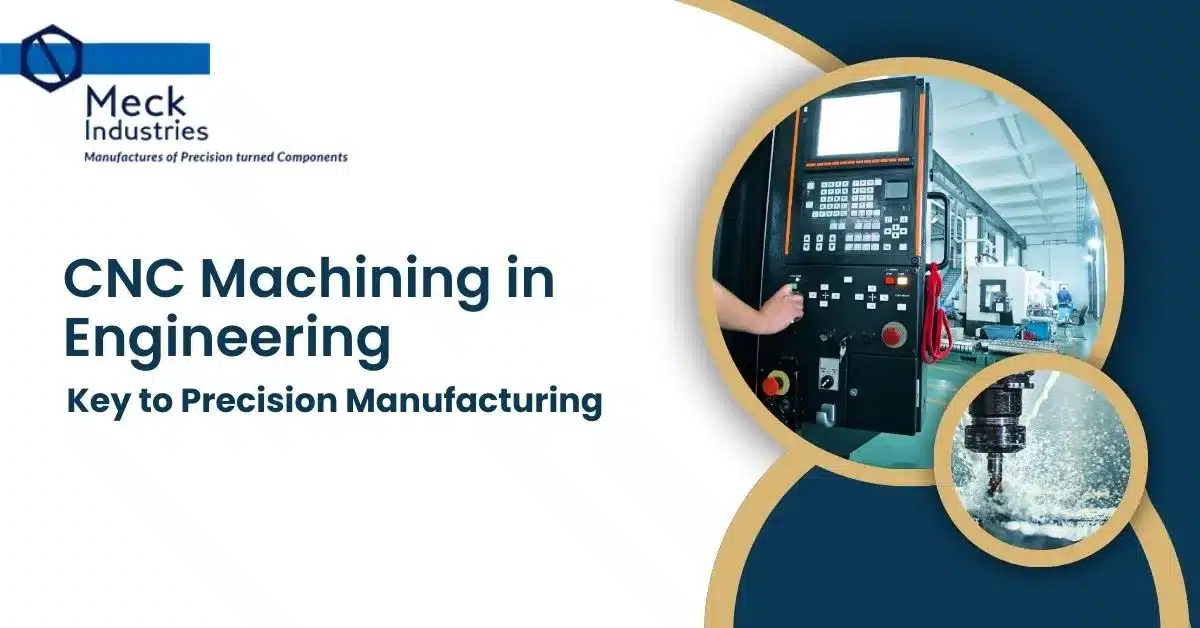
CNC (Computer Numerical Control) machining has revolutionized the engineering and manufacturing industries by providing an unmatched level of precision, efficiency, and flexibility. By using automated machine tools controlled by computer programming, CNC machining allows for highly accurate cuts, designs, and finishes, all while minimizing human error.
What is CNC Machining?
CNC machining involves the use of a computer to control the movements of machine tools, such as mills, lathes, routers, and grinders. These machines follow precise instructions encoded in a digital file to create parts and components for a wide range of industries, including aerospace, automotive, medical, and more.
CNC Machine Parts
CNC machines are composed of several key parts, each contributing to the machine’s overall performance and precision. Some of the essential CNC machine parts include:
- CNC Controller: The brain of the CNC machine, the controller interprets the computer program and sends signals to the machine parts to perform the necessary operations.
- Drive Motors: Drive motors power the machine’s movements, ensuring that the tool moves along the designated paths with high precision.
- Spindle: The spindle holds the cutting tool and rotates it at high speeds. It’s critical for the cutting process and ensures smooth, accurate cutting of materials.
- Tool Holder: The tool holder securely holds the cutting tool in place, ensuring that it does not move or vibrate during the cutting process, which is vital for achieving precision.
- Linear Guides and Ball Screws: Linear guides and ball screws enable smooth, accurate motion along the machine’s axis, facilitating precise movements during machining.
- Chuck: The chuck secures the workpiece in place, preventing it from moving or rotating during the cutting process.
- Coolant System: The coolant system reduces the temperature during machining by delivering coolant to the cutting area, ensuring that the workpiece and tools don’t overheat.
- CNC Machine Bed: The bed is the foundation of the CNC machine, providing support and stability to all other parts, ensuring that the cutting operation occurs on a stable surface.
Why is CNC Machining Important in Engineering?
- Precision:
CNC machining can achieve high levels of accuracy, with tolerances often reaching microns. This precision ensures that components fit together perfectly and perform reliably. - Complexity:
CNC machines can handle intricate and complex designs that would be difficult or impossible to achieve using manual machining techniques. This is crucial for industries like aerospace, where components require complex geometries. - Speed and Efficiency:
CNC machines can work continuously and rapidly without the need for breaks, ensuring high throughput and reduced production time. This is particularly valuable for mass production and large-scale operations. - Consistency:
Once the program is set, CNC machines can produce identical parts in multiple runs, ensuring consistency in the manufacturing process. This is essential for maintaining quality standards across products. - Cost-Effectiveness:
While CNC machining may involve a higher initial setup cost, the reduction in human labour, waste, and the ability to produce complex parts without additional tooling or fixtures can significantly reduce overall production costs.
Applications of CNC Machining in Engineering
CNC machining is used to produce parts for nearly every industry. Some common applications include:
- Aerospace Components: High-precision parts for aircraft and spacecraft are produced using CNC machining to meet strict tolerances.
- Medical Devices: CNC machines are used to create surgical tools, implants, and diagnostic devices with extreme accuracy and reliability.
- Automotive Parts: From engine components to body parts, CNC machining ensures the consistent production of automotive parts.
- Electronics: CNC machining plays a role in manufacturing tiny, precise components used in electronic devices.
The Future of CNC Machining in Engineering
The future of CNC machining is intertwined with advancements in automation, artificial intelligence (AI), and 3D printing. As technologies improve, CNC machines are becoming more advanced, with capabilities for faster processing, greater precision, and even more complex operations. The integration of AI will allow CNC machines to “learn” from previous operations and adapt, further enhancing efficiency and precision.
Frequently Asked Questions
What is CNC and precision machining?
CNC (Computer Numerical Control) and precision machining refer to the use of computer-controlled machines to produce parts with high accuracy. These processes are essential in industries requiring tight tolerances and complex geometries.
What is CNC in precision engineering?
CNC in precision engineering involves using computer-controlled machines to create parts with extreme accuracy. It allows for the production of complex designs with minimal human error and high repeatability.
What is precision engineering in manufacturing?
Precision engineering in manufacturing focuses on producing components with exact measurements, often to micrometer tolerances. It ensures that parts fit together perfectly and perform reliably in high-tech industries.
How precise is CNC machining?
CNC machining can achieve incredible precision, with tolerances often reaching as fine as 0.001 mm (1 micron). This level of accuracy is critical in industries like aerospace, automotive, and medical device manufacturing.
Conclusion
CNC machining has become the backbone of modern precision manufacturing, enabling engineers and manufacturers to produce parts with incredible accuracy, speed, and consistency. Its ability to handle complex designs, reduce waste, and improve production efficiency makes it indispensable in various industries. As technology continues to evolve, CNC machining will remain at the forefront of engineering innovation.



